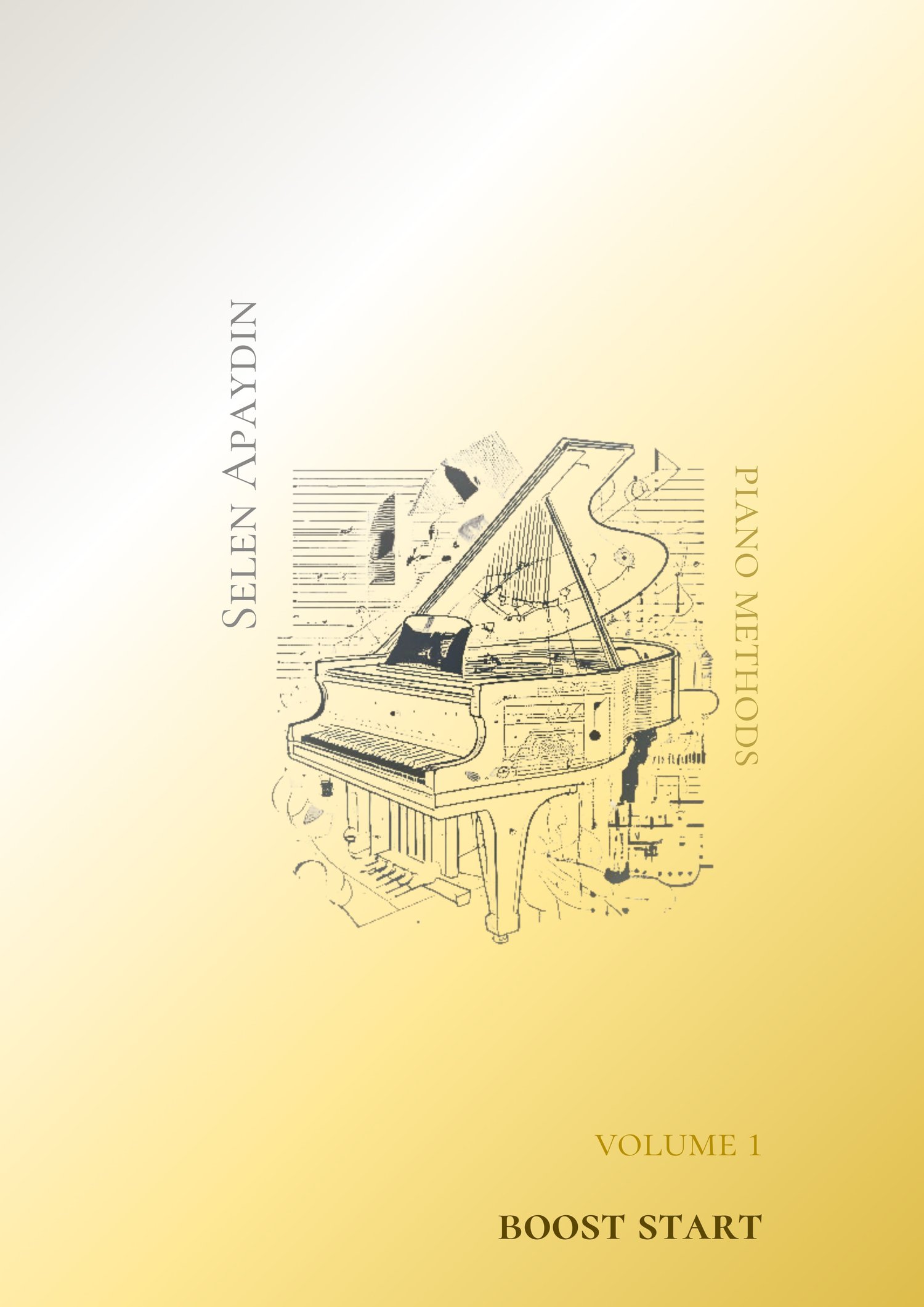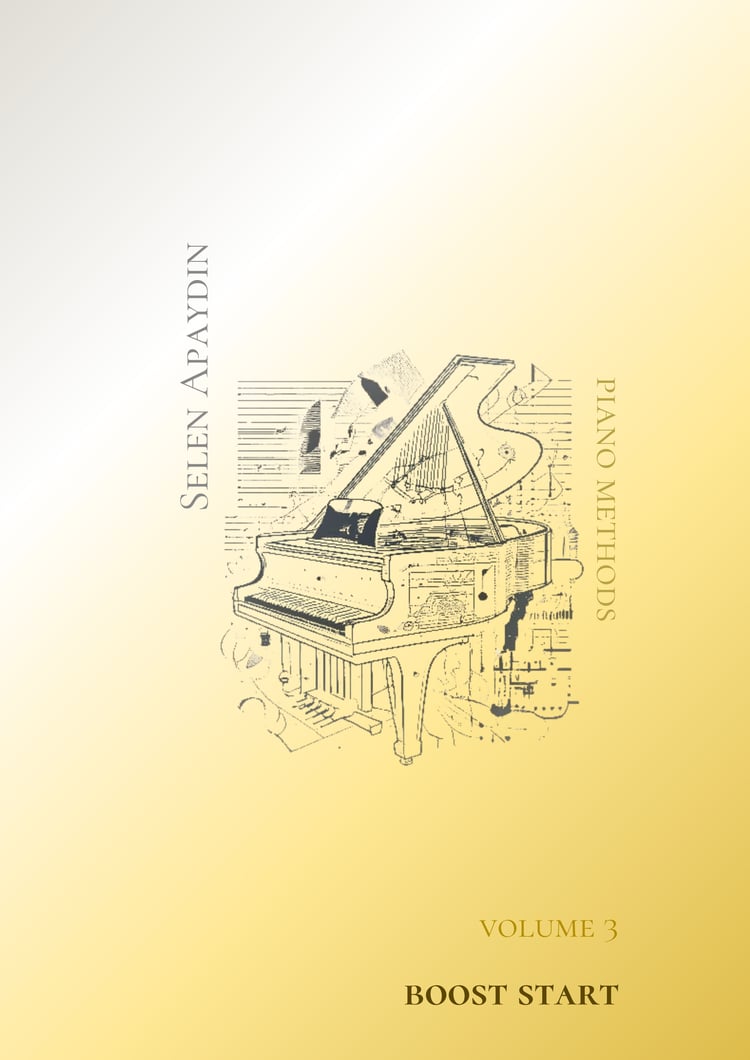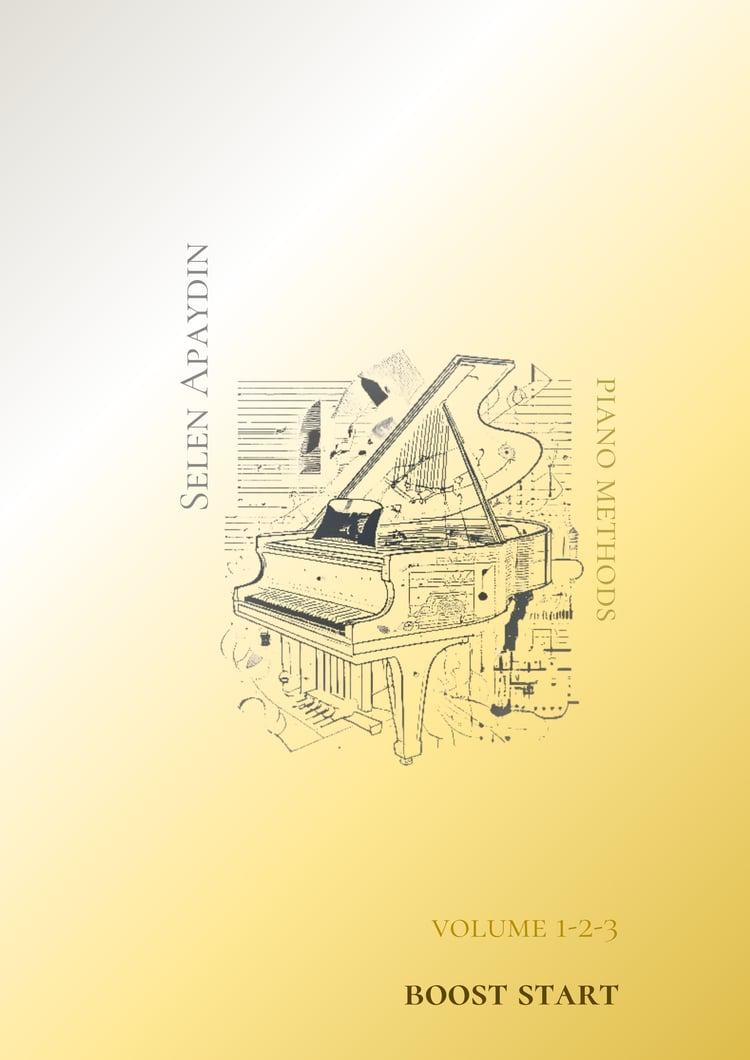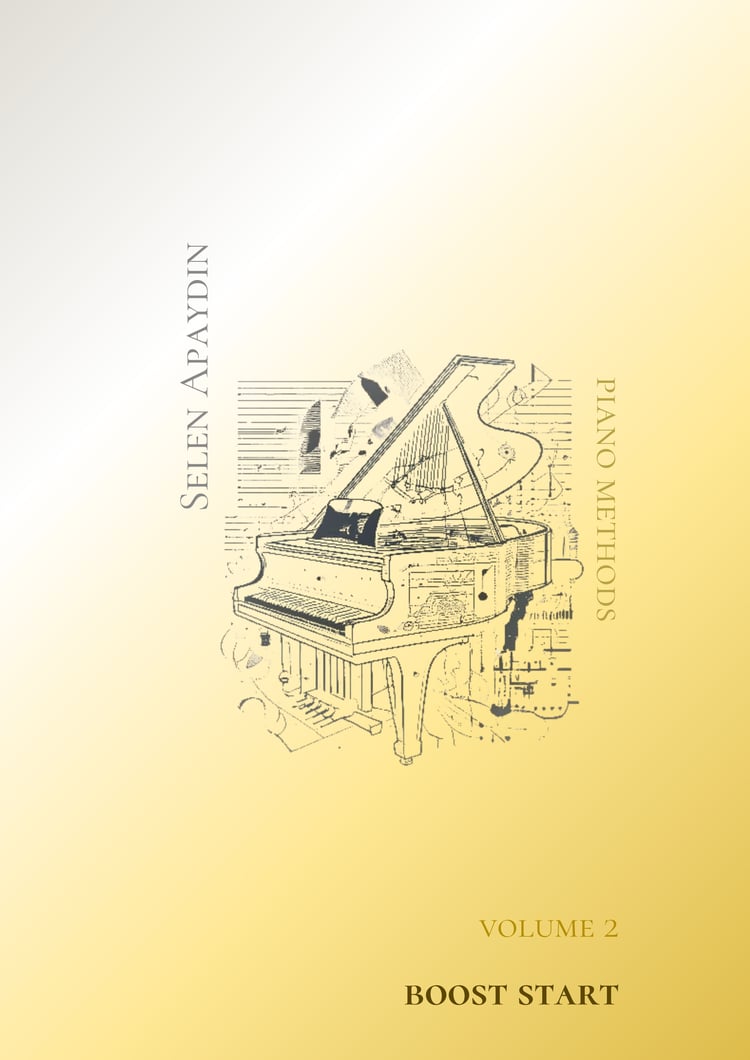
Boost Start 1 (English)
For those who want to start playing the piano
and for piano teachers who are looking for a genuinely new method…
Is reading music actually difficult, can it be made easier?
How much does the learning process accelerate with Boost Start?
How is Boost Start different from classical methods?
Is it effective, is there scientific evidence?
For the answers,
read the foreword and what follows!
Boost Start Volume 1 offers an unique start for piano beginners. It delivers sustainable knowledge by presenting a compact and carefully curated selection of fundamental beginner materials, instead of overwhelming or fragmented content. The effectiveness of this approach has been tested, making the volume a reliable resource for both teaching and learning piano at the beginner level.
It teaches the basics with a whole‑to‑one approach, incorporating spaced repetition for sustainable learning. Instead of narrowing the focus to middle C or a clef system, the method offers flexibility by introducing note reading through more than one innovative approach. It presents richer rhythmic content and progressively arranged melodies, while placing greater emphasis on the left hand—so left‑hand reading will not remain weaker after studying with this method. It also promotes broader use of the keyboard with a wider range of notes. Beyond that, it avoids rigid positions and fingerings preventing common technical problems, and achieves all of this seamlessly.
With 54 pages of musical scores and a 18‑page Learning Guide, Volume 1 is an essential for the piano beginners’ study. Test results show that after studying this book, students achieve over 80% accuracy in note recognition. The method also condenses the material of approximately 40 lessons into just 15, making the learning process significantly more efficient.
Across the Boost Start Series, the three volumes gather all essential basics, connect theory with practice for smooth technical and sight‑reading progress, and expand into every tonality with rich musical elements and practical motives.
By the end of the series, you won’t need any other beginner method—you’ll be fully prepared to step confidently into the early‑intermediate level.




